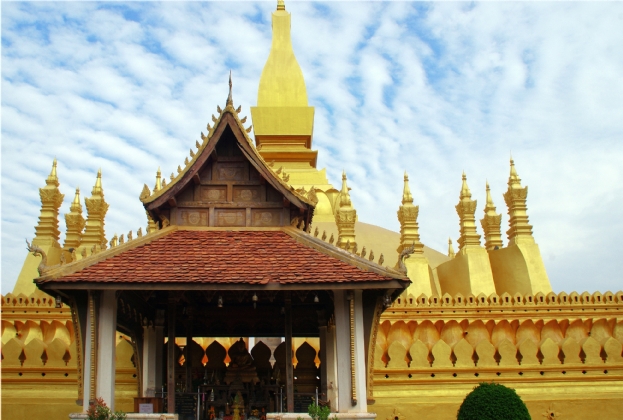Savills report on Vientiane real estate market
31 March 2017
SAVILLS REPORT ON VIENTIANE REAL ESTATE MARKET
March 2017
Laos has recently been among the fastest growing economies in the region with GDP growth at 7% pa over the last decade. Laos is rich in resources, particularly agriculture, forestry, hydropower and minerals.
In 2015, Laos attracted a total of US$1.08 billion of foreign direct investment (FDI). The most popular sector was electricity generation, followed by agriculture.
Laos had considerable success in developing its tourism industry that is now only second to mining in GDP contribution. From 2005 - 2015, tourist arrivals increased 15.6% pa.
1. RETAIL: Still in nascent stage
In Q4/2016, the total modern retail stock was approximately 85,200 m² from eight projects, almost double that of 2013. Chanthabuly district is the largest supplier with 55,800 m² or a 65% share.
Thirteen future projects will supply approximately 160,500 m², most are under construction or planning with undetermined scales.
With 0.10 m² retail per person, retail density in Vientiane is low compared to regional cities, representing strong potential for future growth.
2. OFFICE: Higher rent, lower occupancy
In Q4/2016, the total office stock was 52,000 m² net lettable area (NLA) from 11 projects. Vientiane stock is smaller than that of other cities in Southeast Asia at only 0.6% of Bangkok, 1% of Jakarta, 3% of Ha Noi and Ho Chi Minh City, 17% of Yangon and 28% of Phnom Penh.
In 2017, one project will launch in Chanthabuly district. From 2018 onwards, eight projects will come online; however, the scale of these projects is unconfirmed.
Office demand from Asian tenants is expected to increase in step with higher FDI to Laos.
3. SERVICED APARTMENT: Highest occupancy but lowest average rent
In Q4/2016, 10 projects in four districts supplied approximately 515 units, increasing 3% YoY. Vientian’s stock was only 3% of Bangkok’s, 13% of Ha Noi’s and 34% of Yangon’s.
Up to Q4/2018, there are four new projects will available in Vientiane, one of which will supply 100 units. The developers are wholly foreign-owned enterprises (Vietnamese) and joint ventures between Laos and Chinese/Vietnamese.
4. HOTEL: Lower ARR due to large stock
In Q4/2016, there were 41 three to five-star hotels in Vientiane supplying approximately 3,100 rooms.
In Q4/2016, the ARR of the three to five-star segments in Vientiane was approximately US$63/room/night; the average occupancy was 74%; RevPAR was US$47/room/night. The large stock created competition, pushing the ARR lower than prior years. Vientiane experienced higher occupancy than other provinces as it is a gateway for travelers joining overland tours.
According to the World Travel and Tourism Council (WTTC), in 2016, Laos ranked 7th (out of 184 countries) with the total contribution of travel and tourism to GDP increasing 6.6 percent.
In 2017, three 5-star hotels with approximately 560 rooms are expected to open.
5. APARTMENT: Lack of supply
In Q4/2016, the total apartment stock was approximately 1,000 units. The Laos Real Estate market is growing quickly and has attracted the attention of investors from China and other ASEAN countries. As there is no law separating the ownership of property from the land it is on, there are few apartment developments.
Asking prices range from US$1,000 – US$4,000/m2. Pricing in Vientiane is lower than other regional cities such as Yangon, Ho Chi Minh and Ha Noi. Active projects with absorption exceeding 50%.
The Laos apartment market has great potential due to lack of supply but faces similar challenges as other emerging markets.
6. VILLA | TOWNHOUSE: Low housing demand
In Q4/2016, the total stock was approximately 1,119 dwellings from six projects, of which villas accounted for 70% share
Seven future projects are planned in Vientiane. Due to low housing demand, all future projects are in planning and have not released an implementation program.
Villa/townhouses have an asking price range from US$500 – US$19,000/m2. As the villa/townhouse market in Vientiane only started to develop in 2009, there are limited transactions, with only three projects recording good absorption rates at over 50 percent.
With greater international connectivity and trade, and more capital flowing into the economy, the demand for landed housing will increase.

